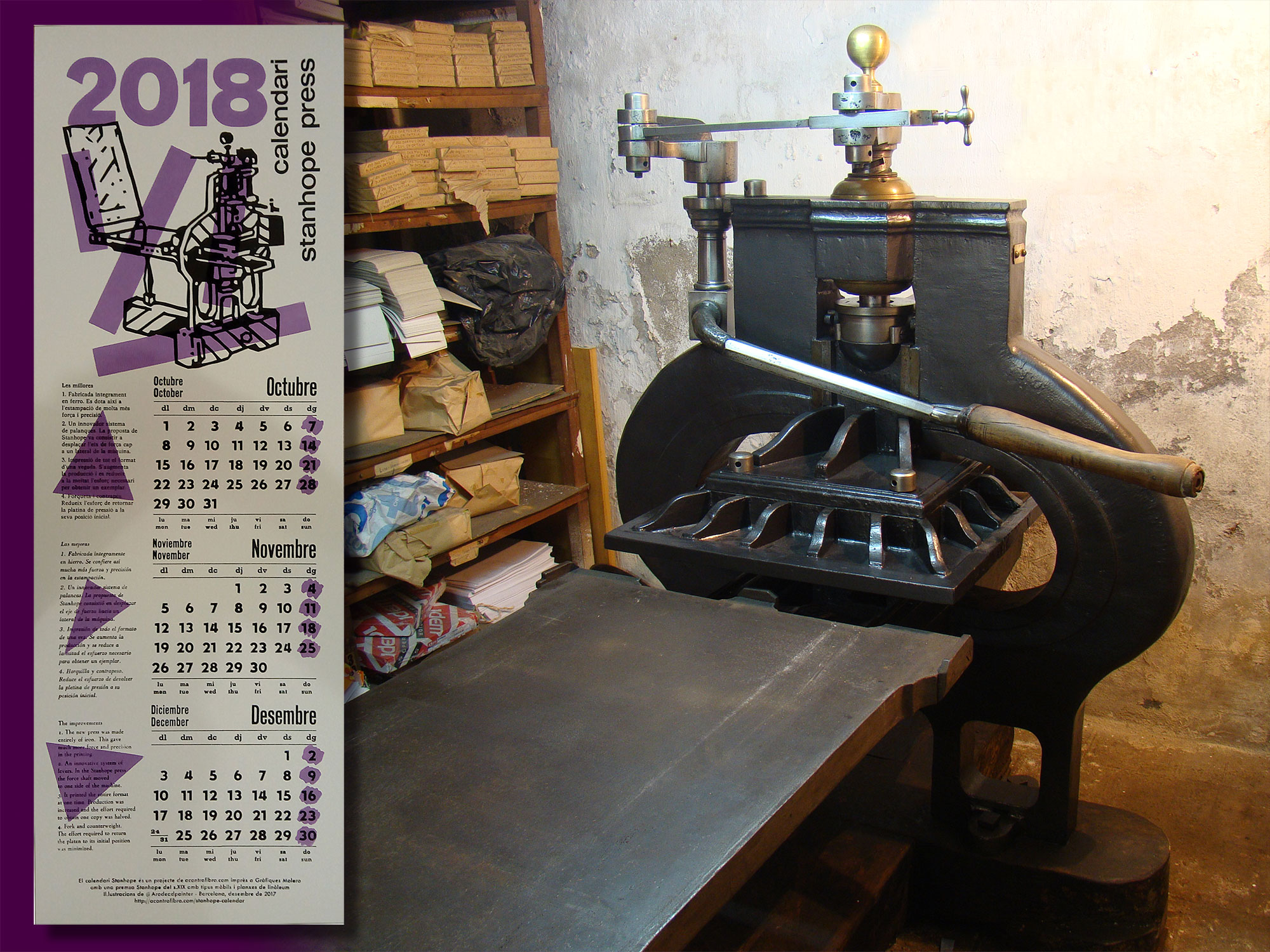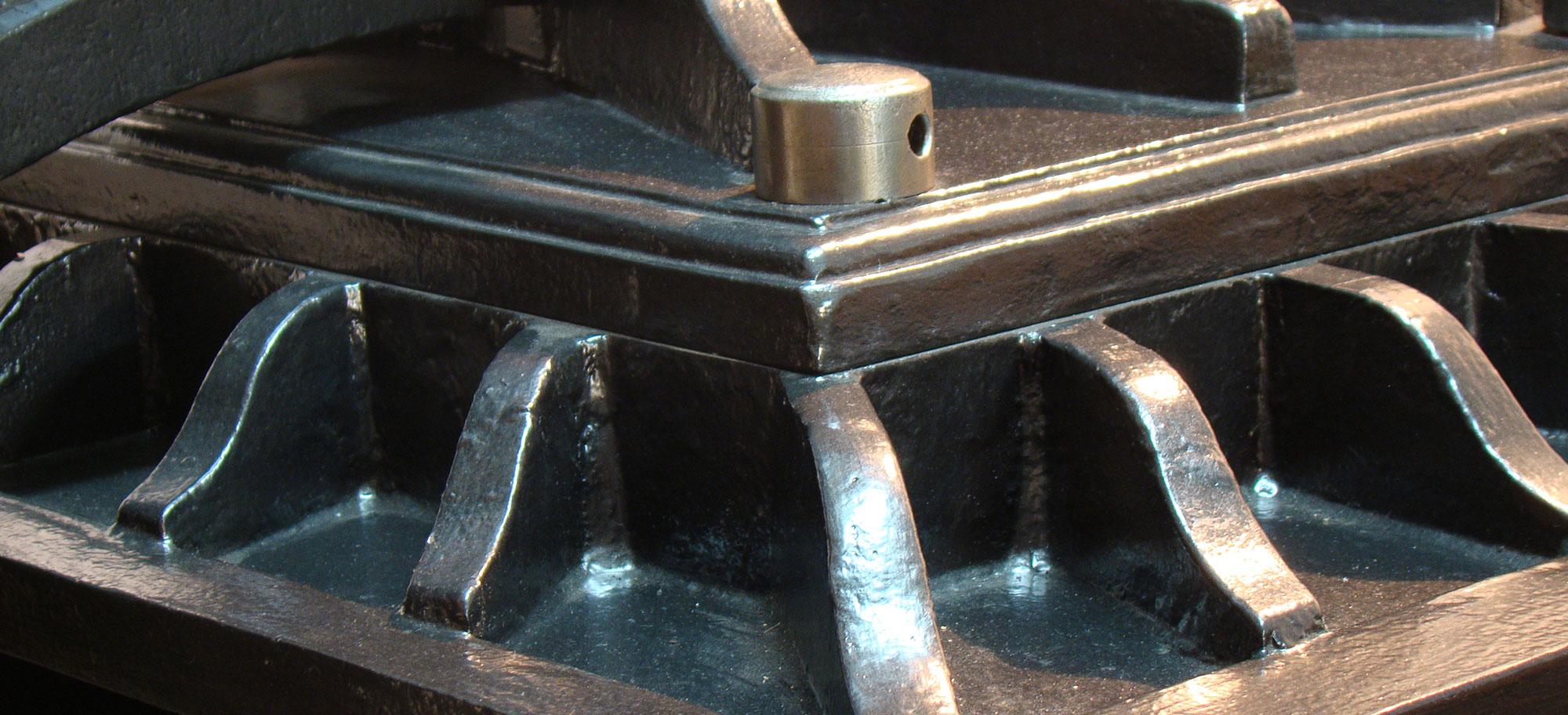The Stanhope Calendar is a project by acontrafibra.com. The calendar has been printed at Gràfiques Molero with a 19th century (from 1803) Stanhope press using moveable types and linoleum carved plates. Illustrations by @Arodeadpainter.
Printed in Barcelona, December 2017 - February 2018.
Who was Charles Stanhope III?
Charles Stanhope III (London, 1753 – Chevening, 1815) Count of Stanhope and Viscount Stanhope of Mahon, was a prominent British politician and scientist. A member of the House of Lords, he was a strong advocate of peace. As an inventor, one of his most important contributions to the development of printing technology was a printing press built entirely of cast iron (the Stanhope Press). He also created a system of stereotypy for newspapers and an ingenious set of polytypes for the composition of texts in English.
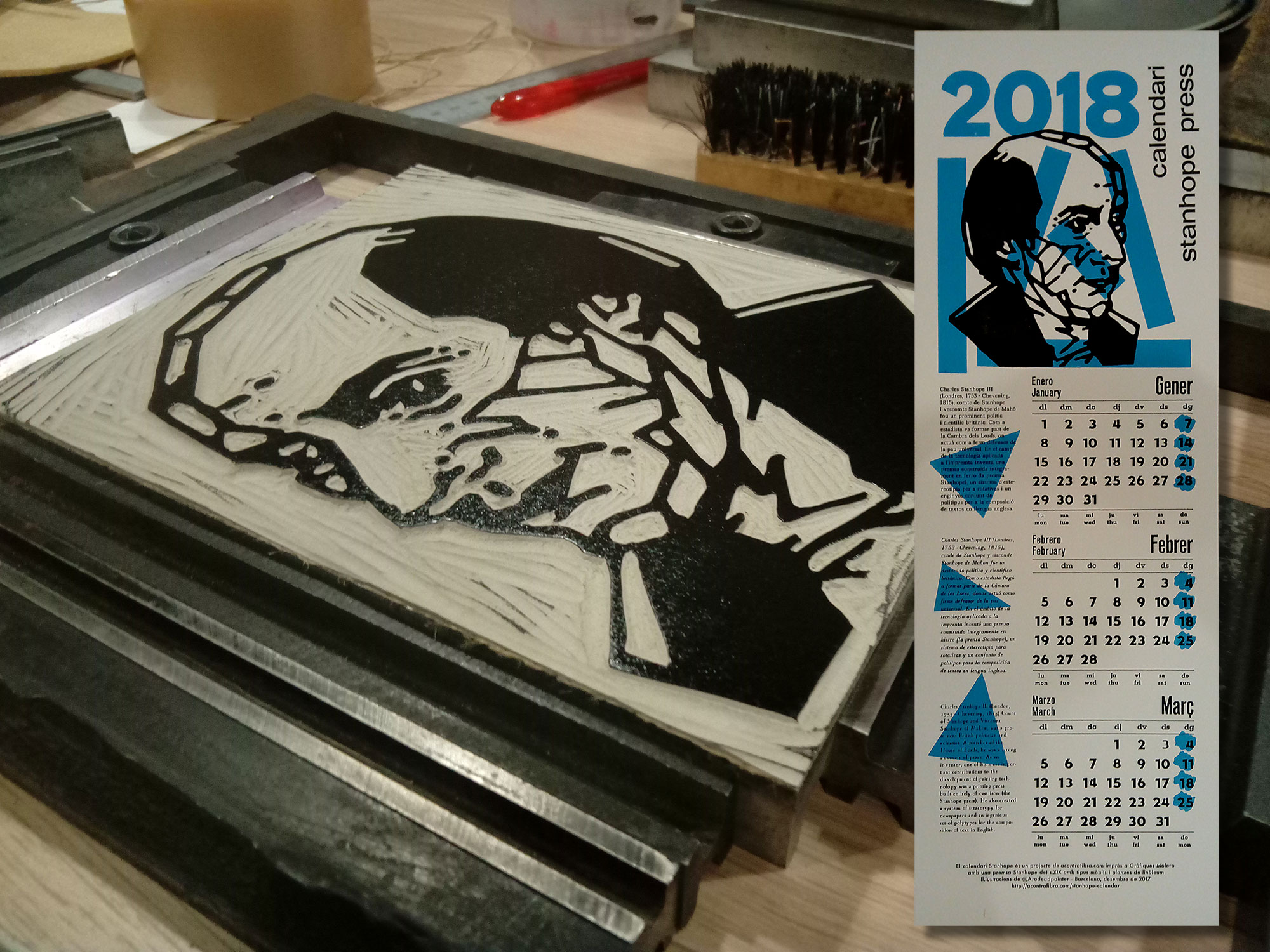
The new press
The first wooden press used by Gutenberg in 1450 was based on the apparatus used to obtain wine. But only the end of the eighteenth century saw a real revolution in the manufacture of printing presses. The new presses started from the same mechanical principle as the traditional ones: a lever was used to move a central screw which exerted downward pressure on a more or less wide surface. They were built entirely in iron, thanks to the advances in the techniques of casting this metal.
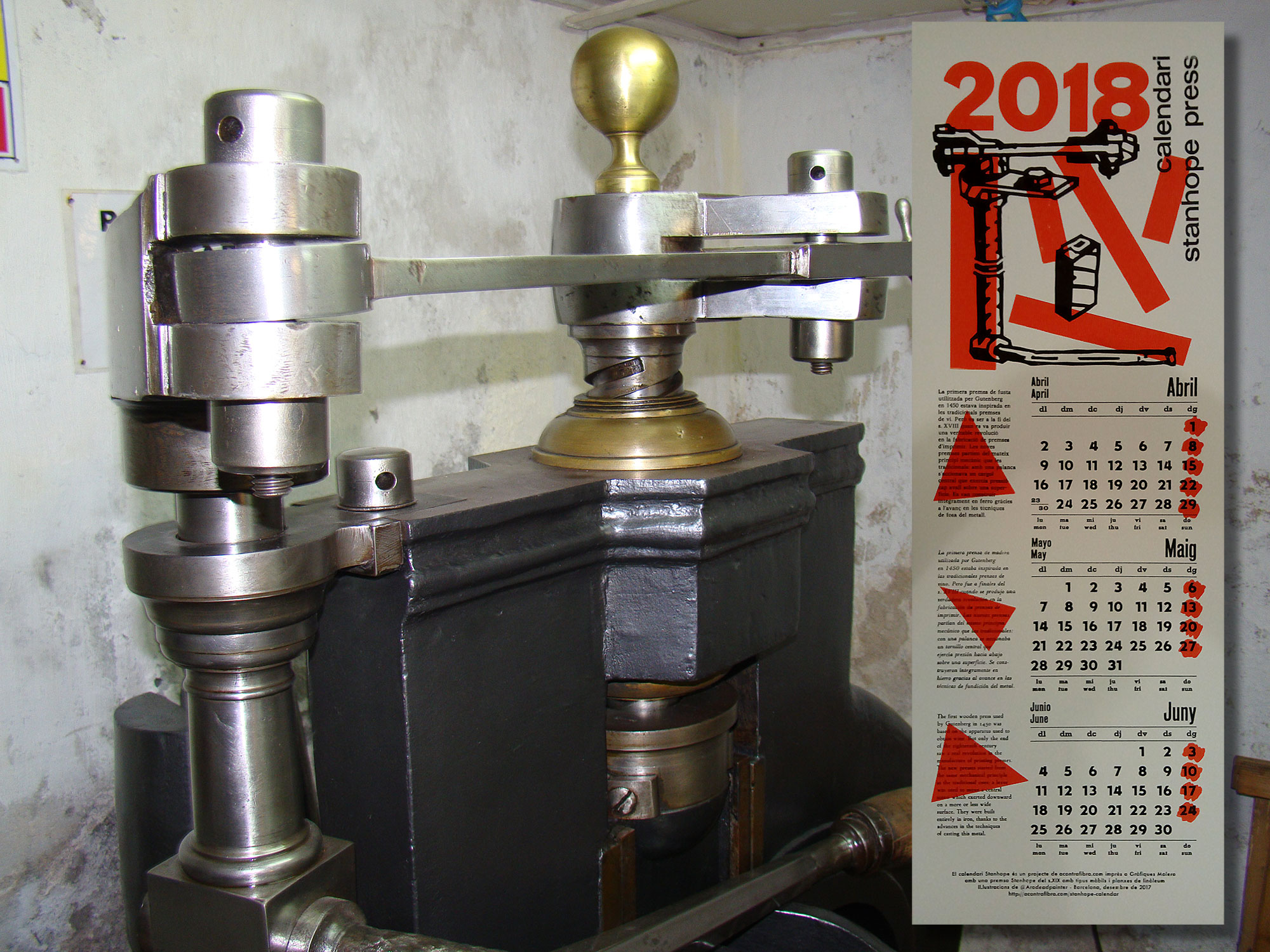
The construction
The machine frame is built in a single piece of cast iron. The main pressure screw is housed in the upper part; it is operated by means of a lever system that moves the force shaft to one side of the frame. It also incorporates a pressure regulator to control the force of the machine. The central part of the structure widens to accommodate the sliders as well as the form of printing and the platen. The whole of the press rests on a sturdy cross-shaped wooden base that gives it stability and resistance.
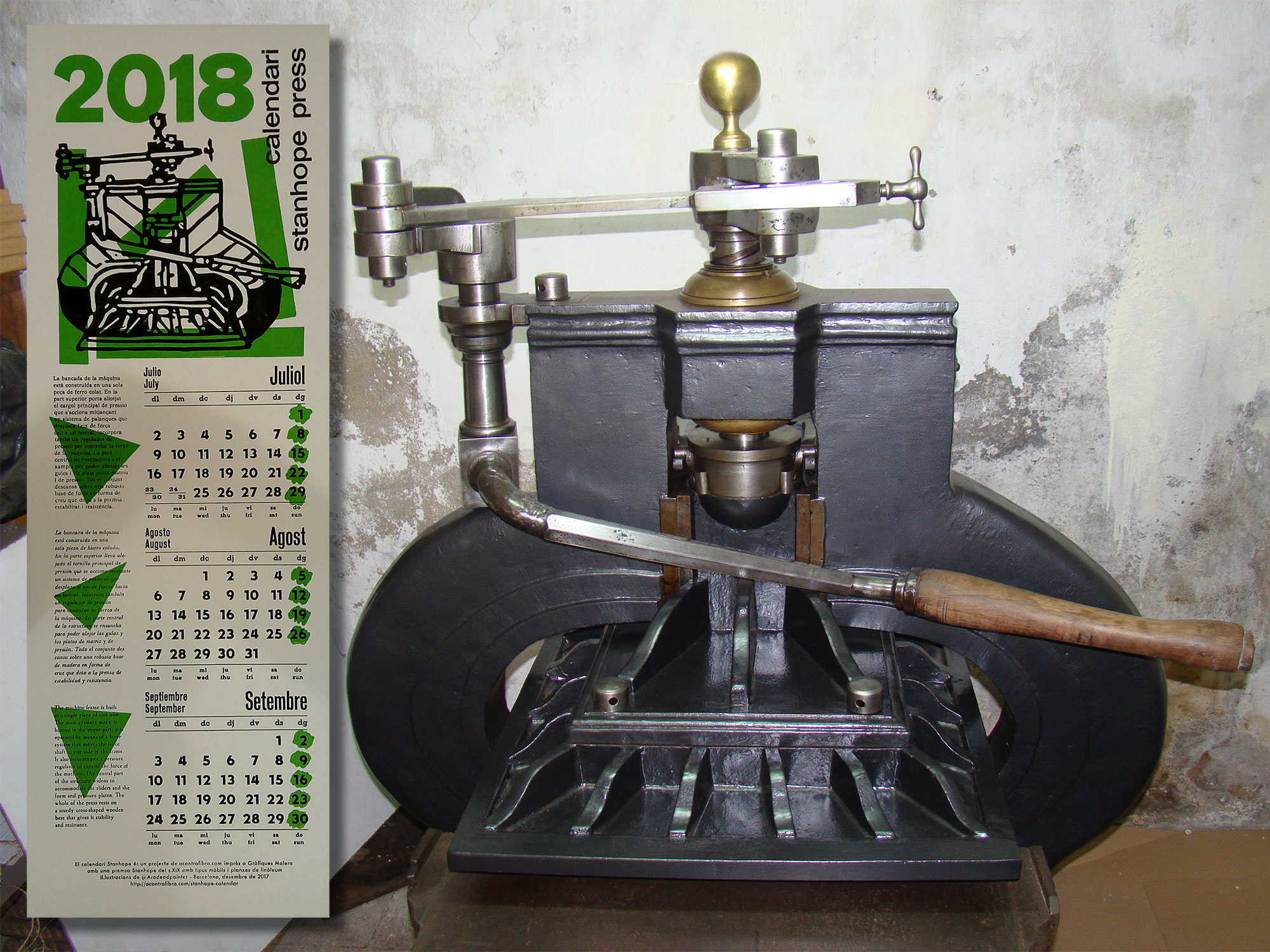
The improvements
1. The new press was made entirely of iron. This gave much more force and precision in the printing.
2. An innovative system of levers. In the Stanhope press the force shaft moved to one side of the machine.
3. It printed the entire format at one time. Production was increased and the effort required to obtain one copy was halved.
4. Fork and counterweight. The effort required to return the platen to its initial position was minimized.
